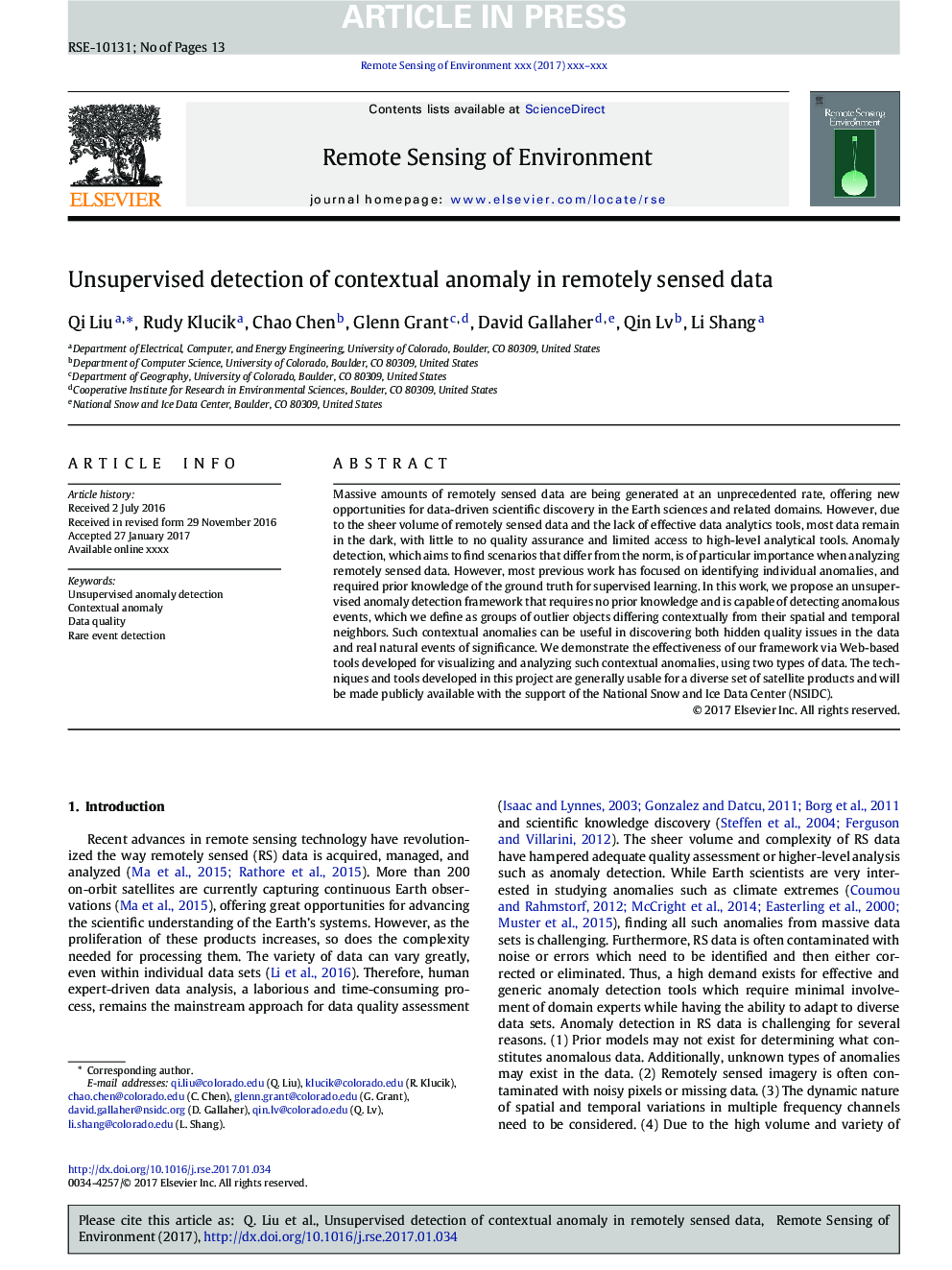| Article ID | Journal | Published Year | Pages | File Type |
|---|---|---|---|---|
| 8866964 | Remote Sensing of Environment | 2017 | 13 Pages |
Abstract
Massive amounts of remotely sensed data are being generated at an unprecedented rate, offering new opportunities for data-driven scientific discovery in the Earth sciences and related domains. However, due to the sheer volume of remotely sensed data and the lack of effective data analytics tools, most data remain in the dark, with little to no quality assurance and limited access to high-level analytical tools. Anomaly detection, which aims to find scenarios that differ from the norm, is of particular importance when analyzing remotely sensed data. However, most previous work has focused on identifying individual anomalies, and required prior knowledge of the ground truth for supervised learning. In this work, we propose an unsupervised anomaly detection framework that requires no prior knowledge and is capable of detecting anomalous events, which we define as groups of outlier objects differing contextually from their spatial and temporal neighbors. Such contextual anomalies can be useful in discovering both hidden quality issues in the data and real natural events of significance. We demonstrate the effectiveness of our framework via Web-based tools developed for visualizing and analyzing such contextual anomalies, using two types of data. The techniques and tools developed in this project are generally usable for a diverse set of satellite products and will be made publicly available with the support of the National Snow and Ice Data Center (NSIDC).
Keywords
Related Topics
Physical Sciences and Engineering
Earth and Planetary Sciences
Computers in Earth Sciences
Authors
Qi Liu, Rudy Klucik, Chao Chen, Glenn Grant, David Gallaher, Qin Lv, Li Shang,
